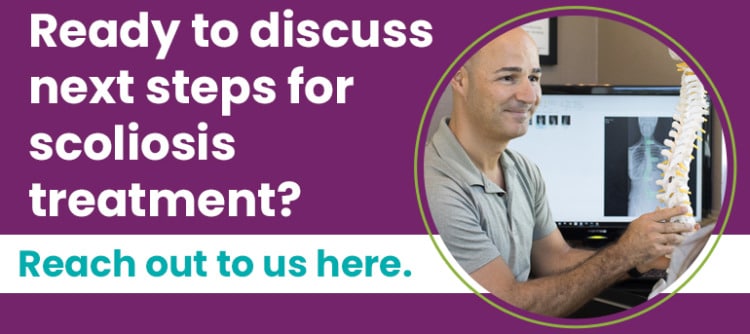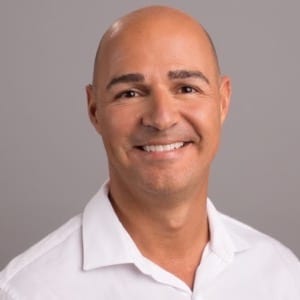Virgin Islands Scoliosis Treatment: Non-Surgical Solutions
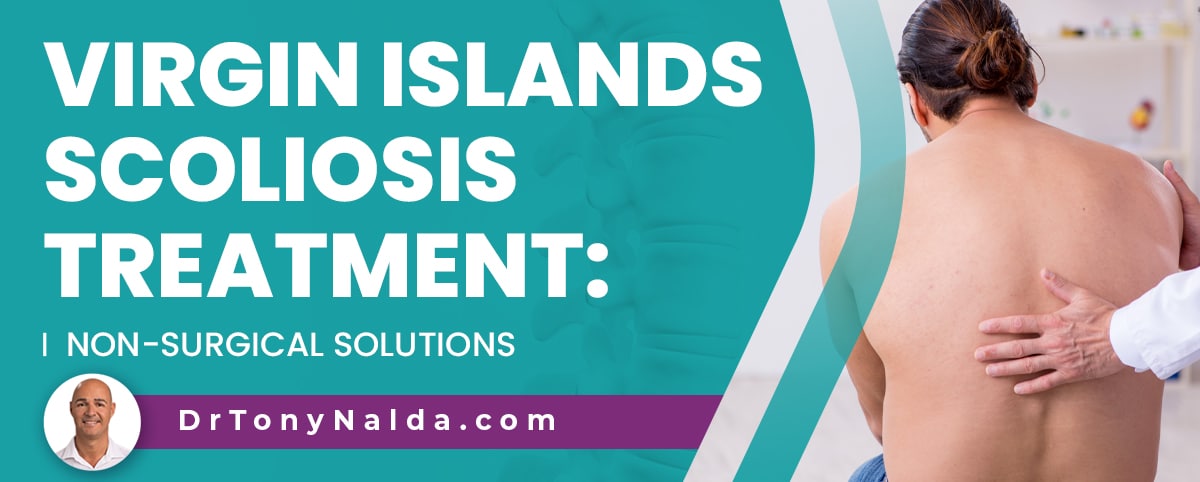
There is more than one scoliosis treatment option, and I want patients to be aware of how different types of treatment can shape long-term spinal health. If scoliosis is treated with surgery, this commonly involves spinal fusion, and non-surgical treatment is chiropractic-centered and integrative.
For a 3.5-hour flight, Virgin Islands scoliosis patients can access Orlando, Florida's Scoliosis Reduction Center®: where scoliosis is treated with a proactive non surgical treatment approach capable of preserving the spine's natural flexibility and function.
Scoliosis sufferers can minimize their symptoms by committing to a proactive non-surgical treatment approach.
Table of Contents
Scoliosis Effects
The effects of scoliosis will vary from person to person.
While scoliosis causes an unnatural side to side spinal curve that also rotates, it can range widely in severity from mild scoliosis to moderate, severe and very severe scoliosis.
There are also different types of scoliosis a person can develop from idiopathic scoliosis, with no known cause, to atypical condition types with known causes: neuromuscular scoliosis, degenerative scoliosis, and congenital scoliosis.
The most prevalent type of scoliosis overall is adolescent idiopathic scoliosis diagnosed between the age of 10 and reaching skeletal maturity.
As a progressive condition, the effects can get worse over time, so where a person's symptoms are at the time of diagnosis doesn't indicate that's where they will stay.
When it comes to children, the main effects of scoliosis involve postural changes caused by the condition disrupting the body's overall symmetry.
When it comes to adult patients, the main effect is pain; adults experience postural changes too, but pain is what leads the majority of adults to a diagnosis.
So what type of postural changes is scoliosis associated with?
Posture and Scoliosis
In many cases of childhood scoliosis, the earliest signs are uneven shoulders and hips, and more changes develop the more progression occurs.
As progression is occurring, the size of the unnatural spinal curve is increasing over time, and this makes the spine more rigid and complex to treat.
In addition to uneven shoulders and hips, postural changes can include uneven shoulder blades, an uneven waistline, the development of a rib cage arch, arms and legs hanging differently, and these types of changes can make clothing suddenly seem ill-fitting.
As the body's posture changes, the condition's uneven forces are also disrupting the body's natural center of gravity, and this causes changes to gait, balance, and coordination.
Disruptions to movement are more associated with severe forms as the body can adjust remarkably well to postural changes in a number of ways, but as scoliosis progresses, the changes become more overt and disruptive.
Scoliosis Pain
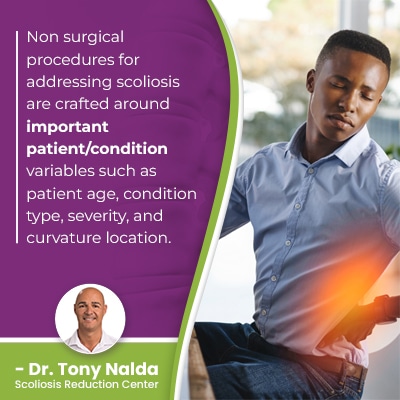 Childhood scoliosis isn't commonly painful because scoliosis doesn't become a compressive condition until skeletal maturity has been reached.
Childhood scoliosis isn't commonly painful because scoliosis doesn't become a compressive condition until skeletal maturity has been reached.
Compression is uneven pressure, and compression of the spine and its surrounding muscles and nerves is the main cause of condition-related pain.
Growing spines are constantly being lengthened, and the lengthening motion counteracts the compressive force of the unnatural spinal curve; when growth has stopped, the spine and its surroundings become vulnerable to the unnatural curve's compressive force.
Scoliosis pain can involve back pain, muscle pain, and pain that radiates into the extremities due to nerve compression.
Scoliosis pain will also get worse alongside progression; adult scoliosis sufferers need pain relief, and for long-term pain management, this can be worked towards through a variety of non surgical treatment methods.
Virgin island orthopedics can funnel patients towards surgical procedures, but the reality is that not all cases of scoliosis, child nor adult, need surgical treatments.
So how do non surgical scoliosis treatment methods work towards minimizing the condition's effects?
Non Surgical Treatment Options
Non surgical procedures for addressing scoliosis are crafted around important patient/condition variables such as patient age, condition type, severity, and curvature location.
When it comes to treating scoliosis proactively, this means starting as close to the time of diagnosis as possible, when conditions are at their mildest and are likely to be the most responsive to non surgical treatment methods.
Here at the Center, non surgical treatment results speak for themselves, and through combining condition-specific chiropractic care, physical therapy, scoliosis exercises, corrective bracing, and rehabilitation, curvature reductions can be worked towards, the spine's surrounding muscle strength and balance can be improved, and structural changes within the spine can be supported and stabilized.
For childhood scoliosis, corrective bracing can be particularly effective as the spines are still growing and are more malleable, and bracing can help by pushing the spine into a corrective position.
Scoliosis can affect any area of the spine including the cervical spine, thoracic spine, and the lumbar spine.
Spinal conditions that cause a loss of the spine's healthy curves can impact quality of life because of how the loss affects spinal strength and function.
If left untreated, the nature of scoliosis is to get worse, and untreated scoliosis can lead to severe and very severe scoliosis, along with a wide array of potential complications such as digestive issues and lung impairment (very severe cases).
The most important thing to understand about scoliosis treatment is that while there are never guarantees, early detection and intervention is associated with treatment success.
The Negatives of Scoliosis Surgery
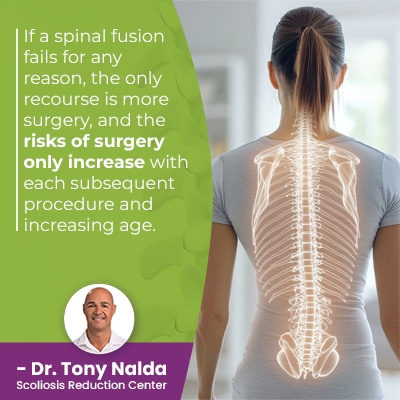 So what is so bad about addressing scoliosis with surgery?
So what is so bad about addressing scoliosis with surgery?
While surgical treatment still has a place in the treatment of severe, very severe, and atypical cases of scoliosis, surgical procedures always come with risks and potential side effects, and spinal surgery is no exception.
Spinal surgery is invasive; remember, the spine and brain work in tandem to form the body's central nervous system, so nerve damage is a risk with any spinal surgery.
Scoliosis surgery is a type of spinal fusion, and this involves fusing the curve's most-tilted vertebrae into one solid bone and attaching metal rods to hold the spine in place; the goal is not to correct the scoliosis, but to stop it from getting worse.
Fused vertebrae can't become more tilted over time, but fusing the spine is contrary to its movement-based design, and what some are disappointed with is the lack of spinal flexibility and range of motion they're left with.
In addition, a fused spine is weaker and more vulnerable to injury, and another disappointing result for some is increased back pain felt at the fusion site.
The main reason many patients opt for spinal fusion is the thought that a surgical response is the best way to restore their pre-scoliosis body-shape and posture; however, this is not the case.
Spinal fusion focuses on the spine and the spine alone, not the condition's effects, which include postural changes; conservative treatment, in contrast, focuses on the spine, but also on improving how the condition affects the spine's surroundings, and the entire body.
If a spinal fusion fails for any reason, the only recourse is more surgery, and the risks of surgery only increase with each subsequent procedure and increasing age.
When it comes to treating childhood scoliosis, remember, the younger a patient is at the time of the surgery, the longer the hardware has to last inside the body, and there is a gap in the research on long-term effects of spinal fusion 30, 40, 50+ years after the procedure.
Conclusion
Virgin Island scoliosis treatment options can include the esteemed Dr. Tony Nalda's non surgical treatment approach with a 3.5-hour flight, and once a patient of the Center, a benefit is accessing multiple effective treatments under one roof.
The way a diagnosis of scoliosis is responded to will have far-reaching effects that can shape a patient's quality of life throughout treatment and beyond, and all cases of scoliosis can benefit from treatment.
As a scoliosis chiropractor, Dr. Tony knows the spine and how scoliosis affects it; he's trained and certified in a variety of scoliosis treatments, so the treatment provided at the Center can be worth traveling for.
When successful, conservative treatment can maintain good posture, reduce curves on a structural level, improve muscular balance and support, push the spine into a corrective position, and further heal and stabilize the spine through rehabilitative efforts.
For those suffering with scoliosis symptoms, condition effects don't have to be permanent, or get worse, not with proactive treatment to manage the condition's progressive nature; it's important to respond to a diagnosis immediately and focus on the key patient/condition variables.
While there are no treatment guarantees, with early detection and intervention, there are fewer limits to what can be achieved with non surgical treatment.
People travel from different countries to access leading medical specialists and the types of results they can offer, so Virgin island patients shouldn't hesitate to schedule an appointment at Florida, Orlando's Scoliosis Reduction Center®.
Dr. Tony Nalda
DOCTOR OF CHIROPRACTIC
After receiving an undergraduate degree in psychology and his Doctorate of Chiropractic from Life University, Dr. Nalda settled in Celebration, Florida and proceeded to build one of Central Florida’s most successful chiropractic clinics.
His experience with patients suffering from scoliosis, and the confusion and frustration they faced, led him to seek a specialty in scoliosis care. In 2006 he completed his Intensive Care Certification from CLEAR Institute, a leading scoliosis educational and certification center.
About Dr. Tony Nalda
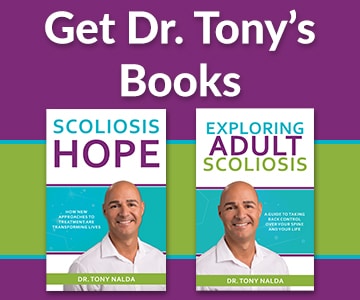 Ready to explore scoliosis treatment? Contact Us Now
Ready to explore scoliosis treatment? Contact Us Now